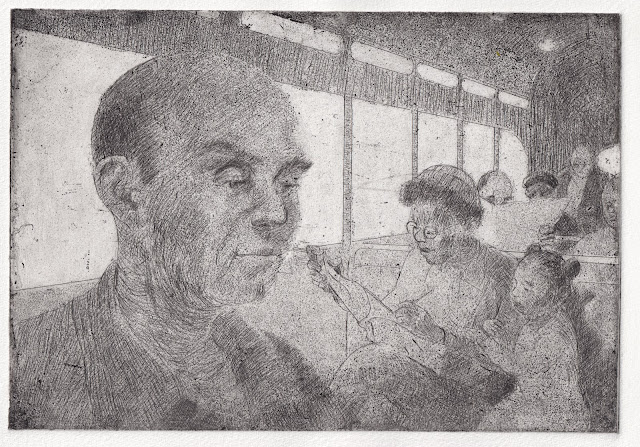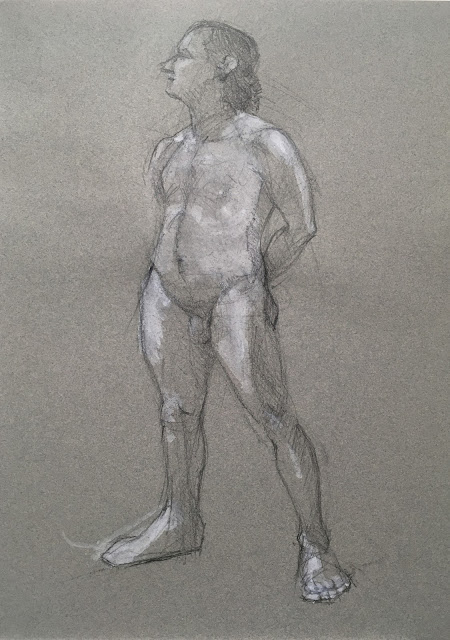I recently invested in a hydrometer, which measures the density of a liquid relative to water. In etching, it is used to measure the ratio of water to ferric chloride in the etching solution, in degrees Baumé, or Be. Counterintuitively, the relationship is not simply one of more water diluting the strength of the solution; instead there is a useful range centered around 35˚Be, tailing off in either direction. The ferric chloride I buy comes as 42˚ Be, which is recommended for a “careful etch,” but other products I use were recommending 34˚, so I decided to adjust the Baumé with the hydrometer as a guide.
.
The hydrometer is basically a closed glass tube, weighted at one end with what looks like birdshot and glue, with calibrations on a paper roll inside the tube.
Floated in plain water, it reads 0.
In the ferric chloride out of the jug, it reads 42.
I gradually diluted the solution by removing ferric chloride with a turkey baster and replacing it with water
until it read 34.
Finally, I wanted to determine the Baumé of the solution I had removed, which had become slightly diluted in the process, and got about 41.
PCC Memories etched with 34˚ Be ferric chloride.
I don't know how much it will show up here, but it made a noticeable difference to etch with 34˚ Be ferric chloride - the lines I added were darker and sharper.







